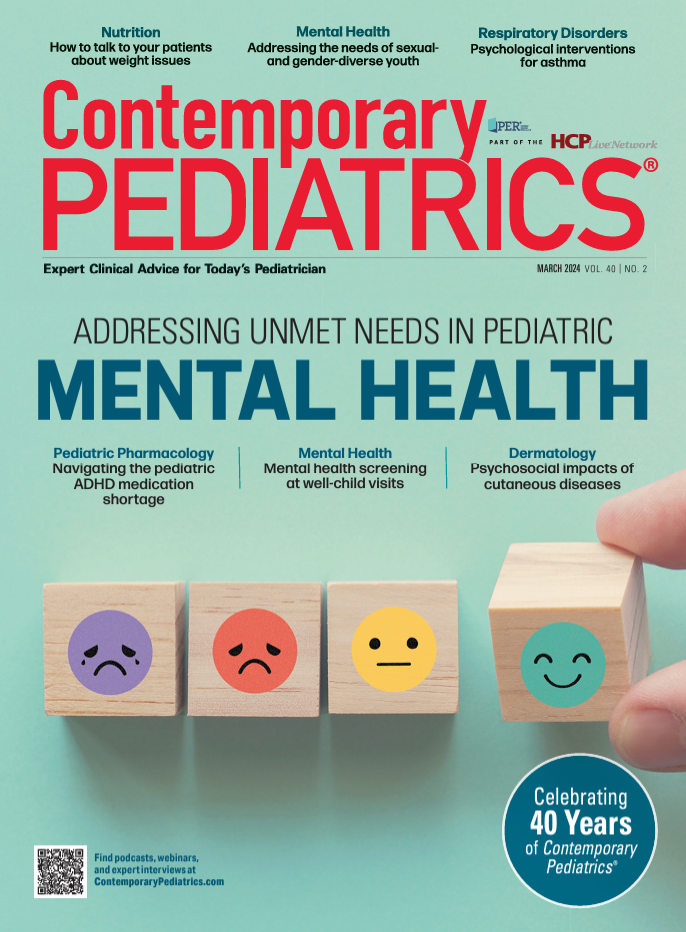Back to the basics: Listening and lifelong learning
"We cannot lead, innovate, and learn if we do not listen to those we seek to serve. Listening is the foundation of trust and trust is the foundation of every therapeutic alliance."
Back to the basics: Listening and lifelong learning | Image Credit: Author provided

The fact that there is a mental health crisis is no secret to practicing pediatricians everywhere. We have been watching it unfold before our eyes over the last 2 decades. García-Carrión and colleagues wrote a metanalysis in 2019, before the pandemic, about the growing crisis and the need to begin thinking outside the box of individual talk therapy to tackle the global crisis.1
Perspective
I took a step back from my regular pediatric practice to learn more about how I could make a significant impact on the mental health crisis of my patient population. To do so, I went back to school to get my master's in social work. It was a good fit because as a foster care and adoption advocate, this special population suffers even more from lack of prioritization and access to mental healthcare. But something else happened in the process, my perspective on how we care for our patients deepened.
Silos
As I attempt to straddle these 2 professions, the silos between medicine and the allied health professions are even clearer. I am currently learning a level-5 evidence-based modality, neurofeedback, for the treatment of attention-deficit/hyperactivity disorder (ADHD) from a social worker with decades of experience. Neurofeedback is also being researched and used to help treat depression, anxiety, substance use disorder (SUD), obsessive-compulsive disorder (OCD), schizophrenia, autism spectrum disorder (ASD), learning disabilities, and more. The breakthrough in its utilization came 50 years ago when Barry Sterman, PhD, professor of Neurobiology and Behavioral Psychology at UCLA, discovered that cats can modify their own brainwaves via operant conditioning. He discovered that these changes also protected them against seizures. That led to a successful experiment in humans followed by decades of research, hundreds of papers, chapters in neuroscience books as well as entire books on the subject by Sterman.2 As happens in the social and medical sciences, many others have been drawn in and are also doing research and utilizing neurofeedback. I was left to wonder why my profession was largely ignorant or dismissive of this powerful tool. Is it these silos? If so, what is keeping us in these silos?
Learning from patients
Then something heartbreaking occurred. The neurofeedback clinic where I am working recently started neurofeedback training on a young man with epilepsy. His seizures started as small eye twitches that were chalked up to tics “secondary to the stress of the pandemic” by his general pediatrician. Over the next year, they progressed, and it became obvious they were seizures. The child was appropriately referred to a pediatric neurologist. His parents had heard about the side effects of antiepileptic medications and therefore sought alternative therapies until the seizures began significantly impacting their son’s daily life. They took him to the pediatric neurologist at a local children’s hospital, where he was admitted and started on two medications. The parents’ fears were realized: “He used to be so loving and kind. He had such a big heart. Since starting medications, he is oppositional and cold. He has anger outbursts over the smallest things.” They continued the medications but renewed their quest for other means to help their son. They found their way to the neurofeedback clinic where I am learning and working. Incredibly, but predictably, his seizures began abating, slowly but surely. The child’s mother then hoped to discuss neurofeedback with his pediatric neurologist at his upcoming appointment to see if he could be weaned from at least one of the medications. She was concerned she would be treated much the same way she was when they showed up at the hospital, with disregard and disgust for choosing to explore alternatives in the first place. I decided to write a letter, doctor to doctor, and explain the modality, its scientific base and the child’s progress. I am not sure if she read the letter, but what I do know is that, once again, the mother’s fears were realized. She called me in tears after the appointment: “I just cannot handle it. The things she said, in front of my child. The way she talked to me. I cannot go back. She would not even listen. The pediatric neurologist said, ‘If it worked, we would be doing it here.” I referred her son to a neurologist out-of-state who uses neurofeedback in his practice.
Listening
Tragically, it is also common knowledge that trust in the medical profession has plummeted in recent years. What I have learned is that so many of us are no longer listening to our patients. Whether it is neurofeedback, medications, vaccines, antibiotics, oils, diets, or discipline, we cannot help our patients if we do not listen. Patients seek alternatives largely because they do not trust physicians. Trust begins with listening. If you listen, you might hear that what you are doing is not working so you can adjust your therapy. You might even learn that some of these “alternatives” have an evidence-based foundation, like neurofeedback for people with epilepsy and seizures.3 We might even break down the silos that exist between social work, psychology, and medicine.
False paradigm
Many of us have been sucked into a false paradigm where we believe we are the arbitrators between insurance companies, hospital administrators, and our patients. We stick to standard protocols and forget that they were designed as guidelines, not dictums. We have forgotten that our patients are our clients, that our patients come first. We were trained to listen actively, think critically, investigate deeply, develop a broad differential diagnosis list, prioritize that list, and develop a plan to narrow that list down. We were taught to make a diagnosis, deliver the diagnosis in a way that honors the patient, actively listen again as the patient provides feedback on what is presented to them, clarify, and listen again. We were trained to develop a treatment plan with input from the patient, implement the plan, follow-up with the patient to make sure the plan is working for the patient. If all else fails, we were trained to think outside the box and research new approaches to treating the patient if they happen not to respond to the treatment plan. We were trained to innovate and advance the field of medicine. Rarely do patients fit neatly into guidelines and protocols developed by those in ivory towers and slapped on us by those with business degrees. What we have fallen into is restrictive practice, not just for our patients, but for ourselves.
Risks of forgetting
Much has been written about reducing “restrictive practice” as it relates to the mentally ill and incarcerated population. Restrictive practices usually refer to physical or chemical restraints and concerns center around violating human rights.4 But what about the treatment plans that don’t fit into the “quality metrics” box but better fit our patient’s unique needs? What about the option of choosing a treatment plan that best fits a family’s value system? Might we be violating their rights, or at least their dignity, if we force a treatment plan on our patients by not even entertaining an alternative?
Conclusion
We cannot lead, innovate, and learn if we do not listen to those we seek to serve. Listening is the foundation of trust and trust is the foundation of every therapeutic alliance. Most of all, listening to our patients is how we become leaders, advocates, innovators, and lifelong learners.
By the way, the boy is weaning off his medications and remains seizure free.
Click here to browse the entire March mental health issue of Contemporary Pediatrics.
References
- García-Carrión R, Carballido BV, Villardón-Gallego L. Children and Adolescents Mental Health: A Systematic Review of Interaction-Based Interventions in Schools and communities. Frontiers in Psychology. 2019;10. doi:10.3389/fpsyg.2019.00918
- Sterman MB, Friar L. Suppression of seizures in an epileptic following sensorimotor EEG feedback training. Electroencephalography and Clinical Neurophysiology. 1972;33(1):89-95. doi:10.1016/0013-4694(72)90028-4
- Turner RP. Biofeedback and Health Evidence-Based Biofeedback and Neurofeedback for People with Epilepsy and Seiz. Policy Insights From the Behavioral and Brain Sciences. 2022;9(2):147-155. doi:10.1177/23727322221108508
- Leif ES, Fox RA, Subban P, Sharma U. ‘Stakeholders are almost always resistant’: Australian behaviour support practitioners’ perceptions of the barriers and enablers to reducing restrictive practices. International Journal of Developmental Disabilities. 2023;69(1):66-82. doi:10.1080/20473869.2022.2116908
